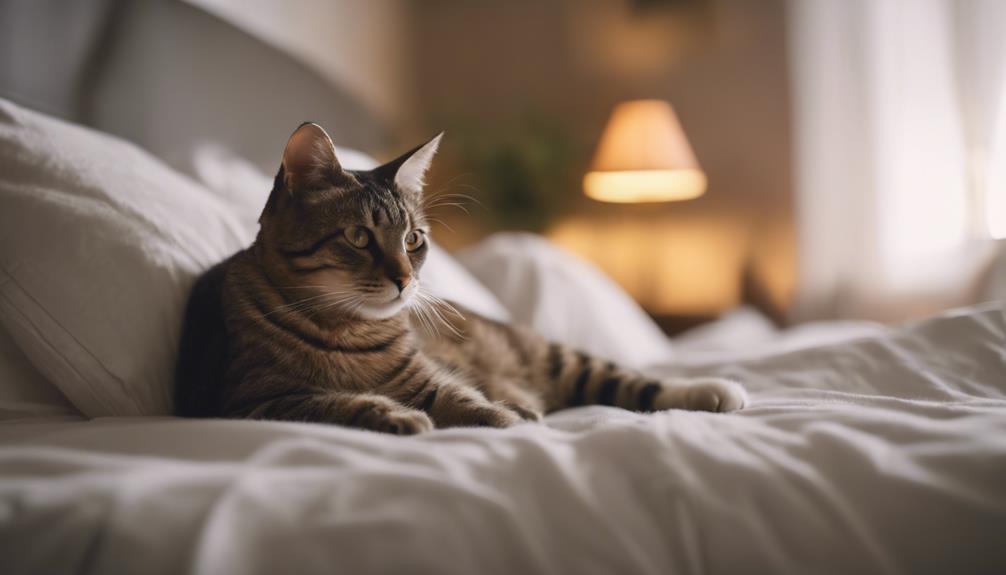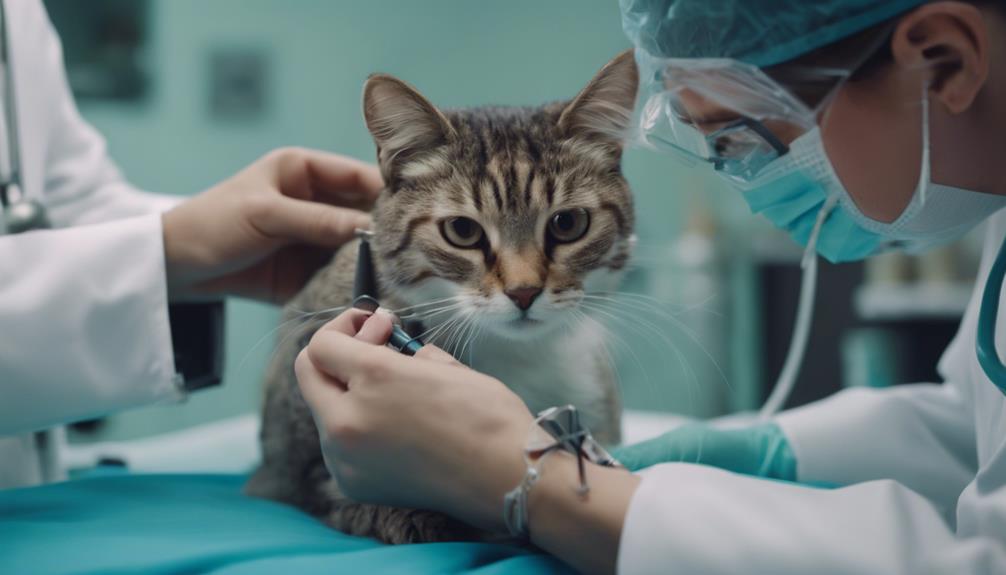In the realm of veterinary care, the process of administering anesthesia and sedation to feline patients undergoing surgery is a critical aspect that demands attention to detail and careful monitoring. The welfare of our feline companions hinges on a thorough understanding of the anesthesia process, potential risks, and post-operative care.
As pet owners, being well-informed about what to anticipate during these procedures is essential for providing the best support to our beloved kitties. This discussion will shed light on the intricacies of cat anesthesia, offering valuable insights into ensuring a smooth and successful surgical experience for your furry friend.
Key Takeaways
- Anesthesia ensures pain-free surgery for cats, tailored to their individual needs and monitored for potential risks.
- Recovery post-anesthesia involves monitoring behavior, following vet instructions for medications, and providing a quiet, warm environment.
- Different types of anesthesia, like general and local, offer varying levels of sedation and pain relief for procedures.
- Consult a vet for proper medication like Gabapentin or Enalapril, ensuring effective management of pain or heart conditions in cats.
Understanding Cat Anesthesia Process
The process of cat anesthesia encompasses a carefully orchestrated protocol to ensure the safe and effective management of pain and sensation during medical procedures for feline patients.
Prior to administering anesthesia, a comprehensive evaluation of the cat's health status is conducted to tailor the anesthesia plan to their specific needs. This may involve pre-anesthesia testing to assess organ function, which is crucial as the medications used rely on well-functioning organs like the liver and kidneys for proper metabolism and excretion.
During the procedure, the cat will receive medications for sedation, pain relief, amnesia, and muscle paralysis to facilitate the intervention while ensuring the cat's comfort and safety.
This individualized approach aims to minimize risks and complications while providing optimal care for the cat's well-being.
Potential Risks and Complications
Potential risks and complications associated with cat anesthesia procedures can vary depending on factors such as the cat's health status and the specific anesthesia protocol used. It is essential for cat owners to be aware of these potential risks to ensure they are prepared for any eventuality.
Some of the risks and complications that can arise during cat anesthesia include:
- Difficulty in intubating the cat
- IV fluid overload
- Risk of aspiration
- Hypothermia (low body temperature)
- Hypotension (low blood pressure)
Being informed about these possibilities can help owners have a better understanding of what their cat may experience during anesthesia and be prepared to work closely with the veterinary team to mitigate these risks.
Post-Anesthesia Recovery Tips

Following anesthesia, aiding your cat in a smooth recovery is crucial for their well-being and comfort. To ensure your feline friend's post-anesthesia recovery goes smoothly, here are some essential tips:
| Recovery Tip | Description | Emotional Impact |
|---|---|---|
| Provide a cozy space | Create a warm, quiet area for your cat to rest | Comforting |
| Monitor closely | Keep an eye on your cat for any unusual behaviors | Reassuring |
| Administer medications | Follow vet instructions for pain relief and antibiotics | Supportive |
Different Types of Anesthesia
Anesthetic administration in veterinary medicine encompasses various modalities tailored to the specific requirements of the patient. Different types of anesthesia used in feline surgeries include:
- General Anesthesia: Provides sedation, pain relief, amnesia, and muscle paralysis for invasive procedures.
- Local Anesthesia: Numbs specific body areas for minor surgeries.
- Combination Anesthesia: Mixing local anesthesia with general anesthesia or sedation to reduce overall medication doses.
- Controlled Loss of Consciousness: General anesthesia ensures a controlled state of unconsciousness and pain relief during surgery.
- Tailored Approach: Anesthesia protocols are customized to cater to individual cat needs based on factors like age, health status, and type of surgery.
Precautions for Cat Anesthesia

When considering the administration of anesthesia to cats, it is crucial to implement specific precautions to ensure the safety and well-being of the feline patient during surgical procedures.
Prior to anesthesia, a thorough physical examination and blood work should be conducted to assess the cat's overall health and rule out any underlying conditions that could complicate the anesthesia process.
It is essential to follow the veterinarian's instructions regarding fasting guidelines to prevent aspiration during anesthesia induction. Proper monitoring equipment should be used throughout the procedure to track vital signs and ensure a smooth anesthesia experience.
Additionally, maintaining the cat's body temperature and hydration levels is vital for a successful anesthesia outcome.
Conclusion
In conclusion, navigating the realm of cat anesthesia and sedation may seem like a daunting task, but with careful consideration and preparation, pet owners can ensure a smooth surgical experience for their feline companions.
Remember, the road to recovery may have its twists and turns, but with proper monitoring and post-operative care, your kitty will be back on their feet in no time – irony intended.




